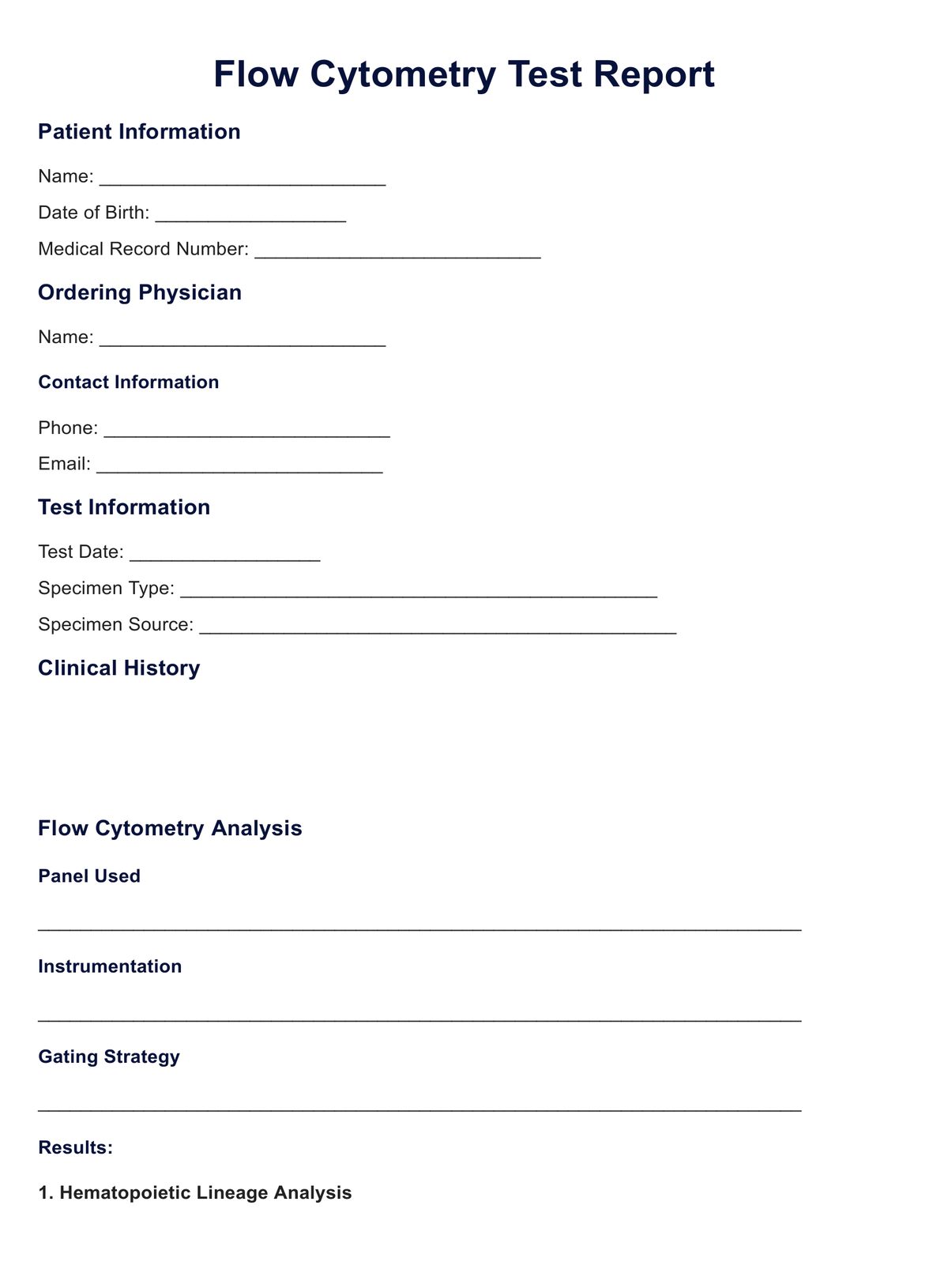Flow cytometry is a diagnostic tool that may help doctors diagnose, stage, and follow the treatment progress of a cancer patient. It is also used to identify and characterize different immune cell types in heterogeneous samples.

Flow Cytometry Test
Unlock the power of Flow Cytometry with our comprehensive guide and template. Master the essentials for accurate and efficient analysis.
Use Template
Flow Cytometry Test Template
Commonly asked questions
Flow cytometry is used to identify and quantify specific marker expressions on cancer cells, such as leukemia or lymphoma, and predict the effectiveness of a particular treatment.
Yes, flow cytometry can detect leukemia. It is valuable for identifying and characterizing abnormal cells in blood and tissue samples.
EHR and practice management software
Get started for free
*No credit card required
Free
$0/usd
Unlimited clients
Telehealth
1GB of storage
Client portal text
Automated billing and online payments











